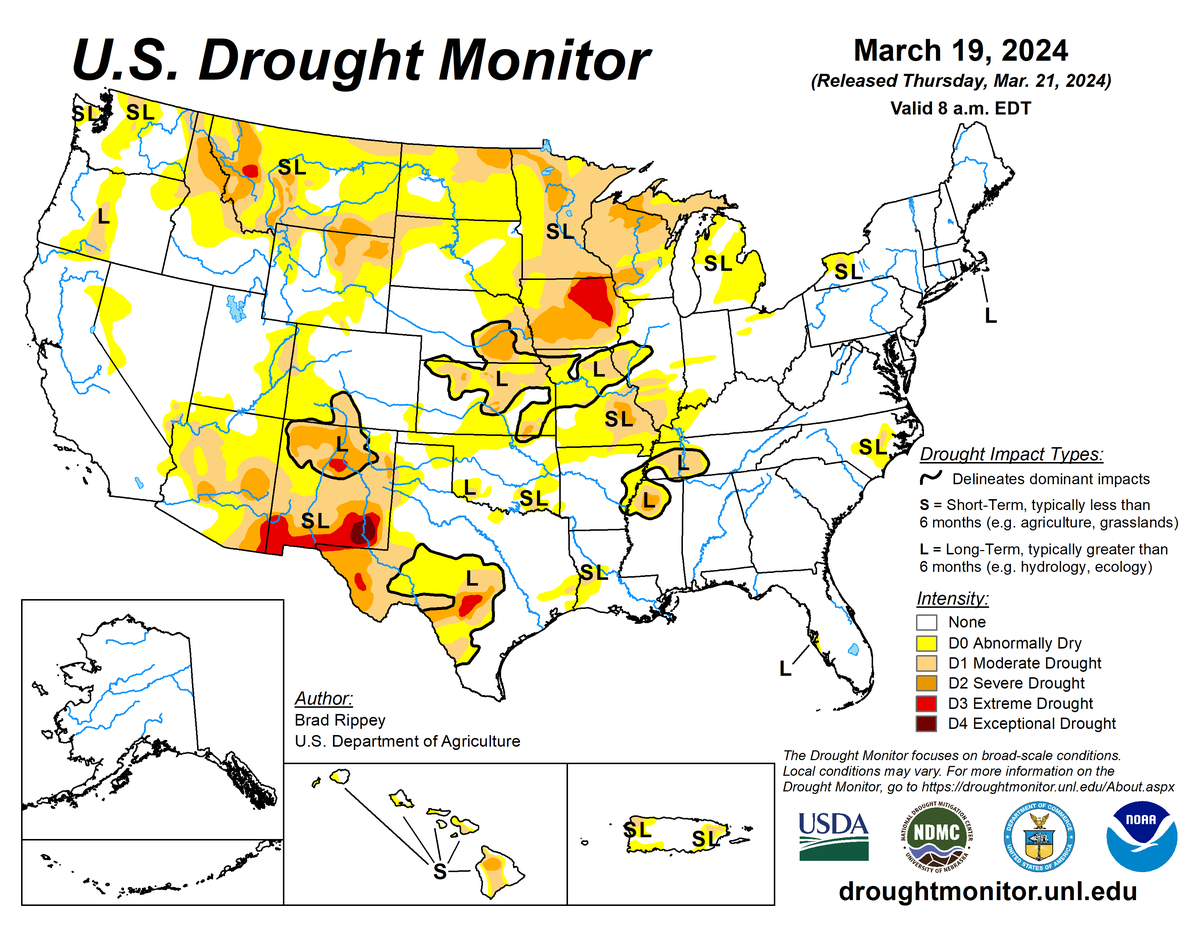
According to the March 19, 2024 U.S. Drought Monitor (USDM), moderate to exceptional drought covers 17.8% of the United States including Puerto Rico, a decrease from last week’s 18.7%. The worst drought categories (extreme to exceptional drought) decreased slightly from 1.3% last week to 1.2%.
The atmospheric circulation at the upper levels over North America became distorted and convoluted during this U.S. Drought Monitor week (March 13–19). An upper-level trough moved over the western U.S. and then became cut off from the jet-stream flow. It brought above-normal precipitation and cooler-than-normal temperatures to the Southwest. Meanwhile, the upper-level circulation became highly amplified, forming an upper-level ridge over western Canada into the Pacific Northwest and a trough over eastern Canada and the eastern U.S. Pacific weather systems moved through this ridge/trough pattern. They sent cold fronts and low-pressure systems southward across the central and eastern U.S.
In spite of a brief cold snap associated with the cold fronts, most of the contiguous U.S., outside of the Southwest, had a warmer-than-normal week, a result of much warmer weather before the fronts passed. The fronts and lows generated above-normal precipitation across parts of the Midwest to northern New England and from the southern Plains to the Lower Mississippi Valley. The rest of the CONUS had a drier-than-normal week. With an upper-level trough over eastern North America and an upper-level ridge over the Caribbean stretching into the Gulf of Mexico, persistent windy conditions were created for the eastern third of the contiguous U.S.
Drought or abnormal dryness expanded or intensified in parts of the Great Plains and a small part of the Ohio Valley, but contracted or reduced in intensity in parts of the West, Midwest, southern Plains, Ohio and the Tennessee Valleys, the Mid- to Lower Mississippi Valley, and Puerto Rico.
Nationally, contraction exceeded expansion, so the nationwide moderate to exceptional drought area decreased this week. Abnormal dryness and drought are currently affecting over 63 million people across the United States including Puerto Rico—about 20.5% of the population.

The full U.S. Drought Monitor weekly update is available from Drought.gov
In addition to Drought.gov, you can find further information on the current drought as well as on this week’s Drought Monitor update at the National Drought Mitigation Center
The most recent U.S. Drought Outlook is available from NOAA’s Climate Prediction Center and the U.S. Department of Agriculture provides information about the drought’s influence on crops and livestock
For additional drought information, follow #DroughtMonitor on Facebook and Twitter



